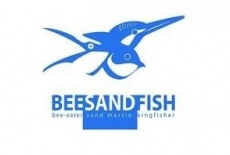Basic information and objectives
Project title: Restoration of nesting and feeding habitats of Sand Martin,
Kingfisher and European Bee-eater in Danube-Morava region
Financial scheme: LIFE+, Nature and Biodiversity
Acronym: LIFE BeeSandFish
Project code: LIFE12 NAT/SK/001137
Duration: 01/01/2014 – 31/03/2019
Budget: 3 676 064 € (50 % financed by European Commission)
Why do we implement the project?
In the past the Danube-Morava region provided various natural nesting opportunities for bird species. Nowadays Sand Martin, Kingfisher and European Bee-eater suffer with lack of suitable nesting and feeding habitats in the area. Steep river banks and terrestrial walls suitable for nesting as well as small river branches, wetlands and meadows as potential feeding places degraded due to the river regulations and bank stabilization with boulders and concrete. The abandonment of traditional forms of farming in the country (cattle grazing and mowing) caused the disappearance of suitable habitats for insect, which provide food source for Sand martin and Bee-eater.
Defined objective:
The main objective of this project is to improve the conservation status and population characteristics of target bird species by restoration of their habitats (feeding and nesting). Conservation actions including suitable restoration management will lead to improvement of conditions for these bird species and protection of nature and natural values in the region.
Partial goals and expected project results:
Steep nesting sites (river banks, clay-sand and loess walls) will be restored at minimum of 1 750 m.
Steep nesting sites (river banks, terrestrial walls) will be protected by fencing, closing of access roads, installation of caution and prohibition signs, reduction of human disturbance, camera security control and seasonal sand and gravel extraction regulation on 15 localities.
Water and wetland habitats will be restored at least on 8 localities (3 river branches on the length of 3 600 m and 5 wetlands of total size of 13.2 ha).
Forest habitats will be restored at least on 30 localities (by planting of 20 000 trees of native species and marking at least 1 500 old and valuable trees to be protected from logging).
Grasslands will be restored by introducing of grazing on the minimum of 5 localities with the total size of 75 ha.
Restored grasslands will be maintained as meadows by mowing on the minimum of 3 localities with the total size of 25 ha.
















